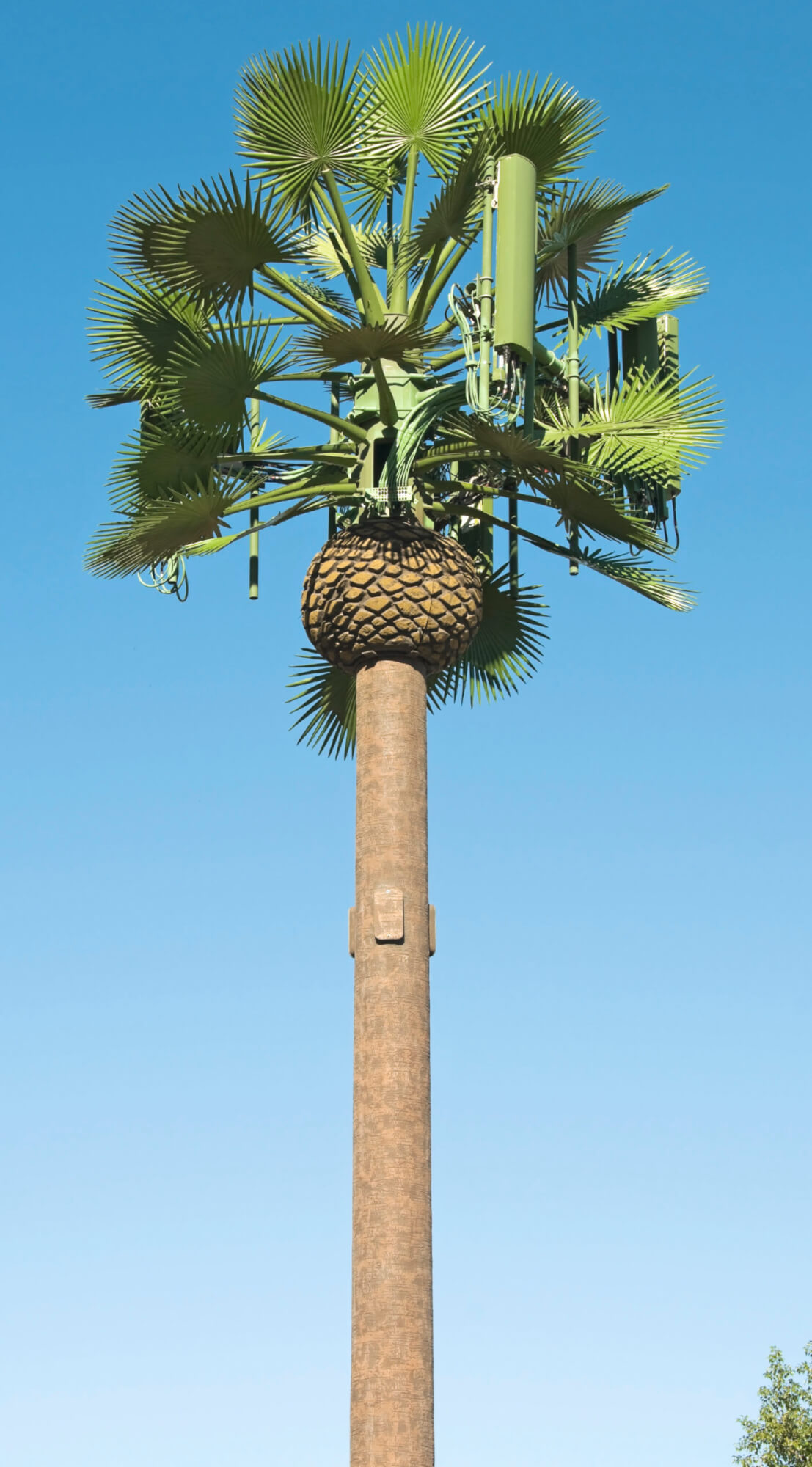 The public wants mobile service at their fingertips – demanding seamless connectivity everywhere and all the time… but they don’t want to see any of the telecom towers and equipment. Because of these concerns, an integral consideration of many telecommunication tower types is to ensure aesthetic designs are combined with smooth service. As a property owner, you may be concerned (or have heard concerns from the community) about the visual effect of a future antenna placement on your property or rooftop space. It’s a common concern and one that stirs up plenty of debate.
The public wants mobile service at their fingertips – demanding seamless connectivity everywhere and all the time… but they don’t want to see any of the telecom towers and equipment. Because of these concerns, an integral consideration of many telecommunication tower types is to ensure aesthetic designs are combined with smooth service. As a property owner, you may be concerned (or have heard concerns from the community) about the visual effect of a future antenna placement on your property or rooftop space. It’s a common concern and one that stirs up plenty of debate.
Towers, commonly used for wireless telecommunications, come in a variety of types including lattice, guyed, monopole, self-support, tower-on-wheels, and camouflage towers. And while many towers are not exactly invisible, using techniques for stealthing a communication tower with artificial versions of objects such as trees, cactus, bell towers, church steeples, etc, will help to decrease the overall visual impact.
Ordinances for Telecommunication Tower Types
Companies started disguising cell towers as trees in the 1980s to blend the large, obstructive metal structures into the natural environment and make them look more appealing. In the United States the 1996 Telecommunications Act allows local jurisdictions to set maximum heights for towers, such as limiting tower height to below 200 feet. The limit is more commonly set to 190 or 180 feet to allow for masts extending above the tower.
Today, building a new tower or collocating an antenna on an existing structure requires compliance with the Commission’s rules for environmental review. These regulatory processes ensure that appropriate measures are taken to protect environmental and historic resources.
New tower construction requires:
- approval from the state or local governing authority for the proposed site;
- compliance with the National Environmental Policy Act (NEPA);
- compliance with the National Historic Preservation Act (NHPA); and may require
- notification to the Federal Aviation Administration (FAA); and
- Antenna Structure Registration (ASR) with the FCC.
Some legislation defines “alternative tower structures” to include man-made trees, clock towers, bell steeples, light poles and similar alternative-design mounting structures that camouflage or conceal the presence of antennas or towers. The materials, colors, textures, screening and landscaping should blend the tower into the natural setting and surrounding buildings must be used.
Reducing Energy Consumption
Apart from making towers look aesthetically pleasing in their environment, newer structures are designed to reduce operational costs and lower energy consumption. Concealing a cell tower also provides a unique opportunity to upgrade, or retrofit, an existing tower with advanced antennas for increased efficiency. At KMB, our team of experts keep up with the latest RF equipment innovations and work with National Association of Tower Erectors (NATE) to bring these efficient solutions for every project that comes our way.
KMB Telecommunication Services
KMB is a leading provider of Design & Build tower modifications and reinforcement services. We combine expert structural engineering services with our fabrication and construction services to maximize the structural capacity of our clients’ vertical real-estate.
As a member of NATE; we take pride in the professional level of service our tower crews provide across the nation. Our experienced team of Construction Managers and Tower Foreman provide hands on management to our crews across the nation working out of regional office locations in New York, Boston, Chicago, San Francisco, Dallas and St. Louis. Contact us to discuss the right telecommunication tower types for your project today.